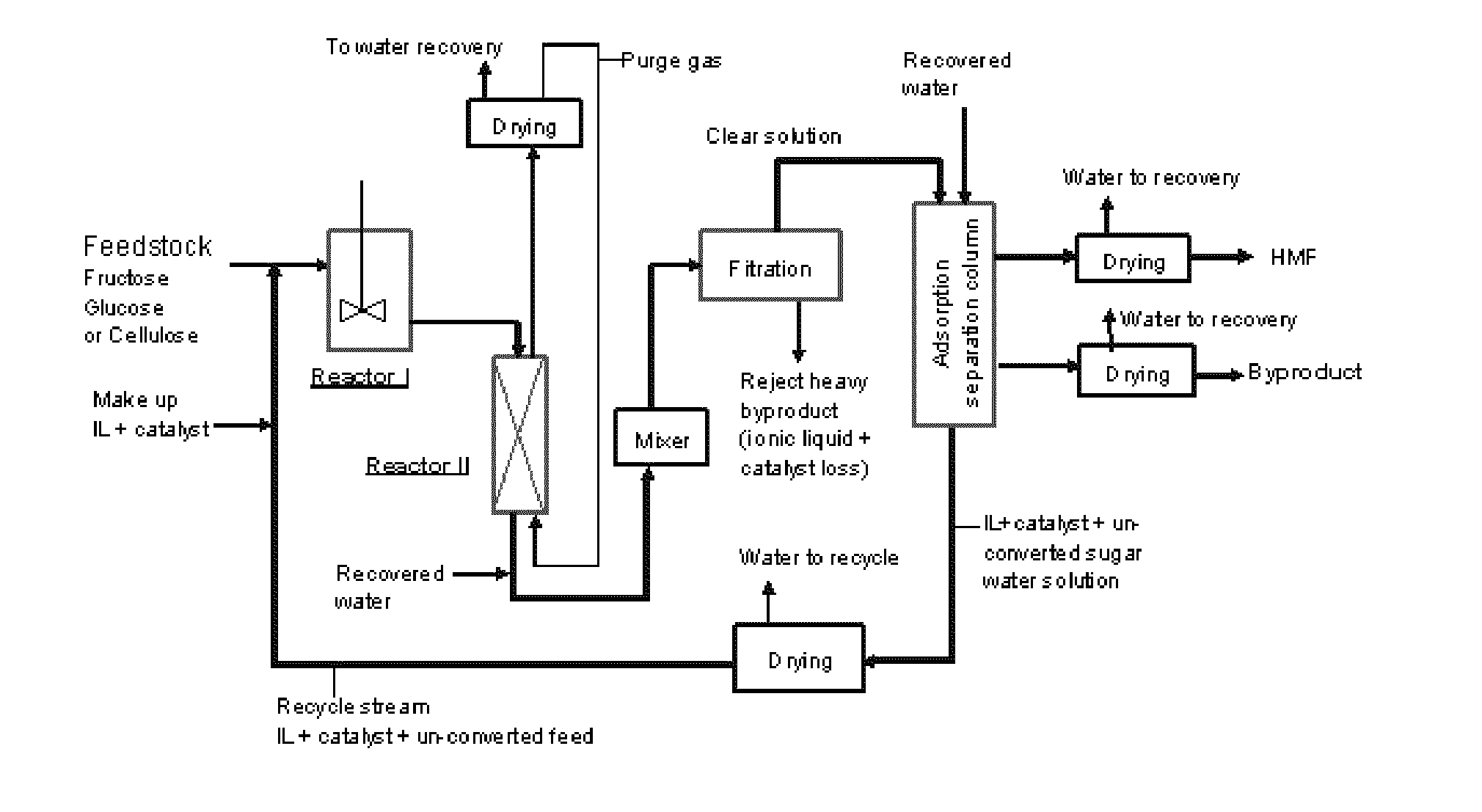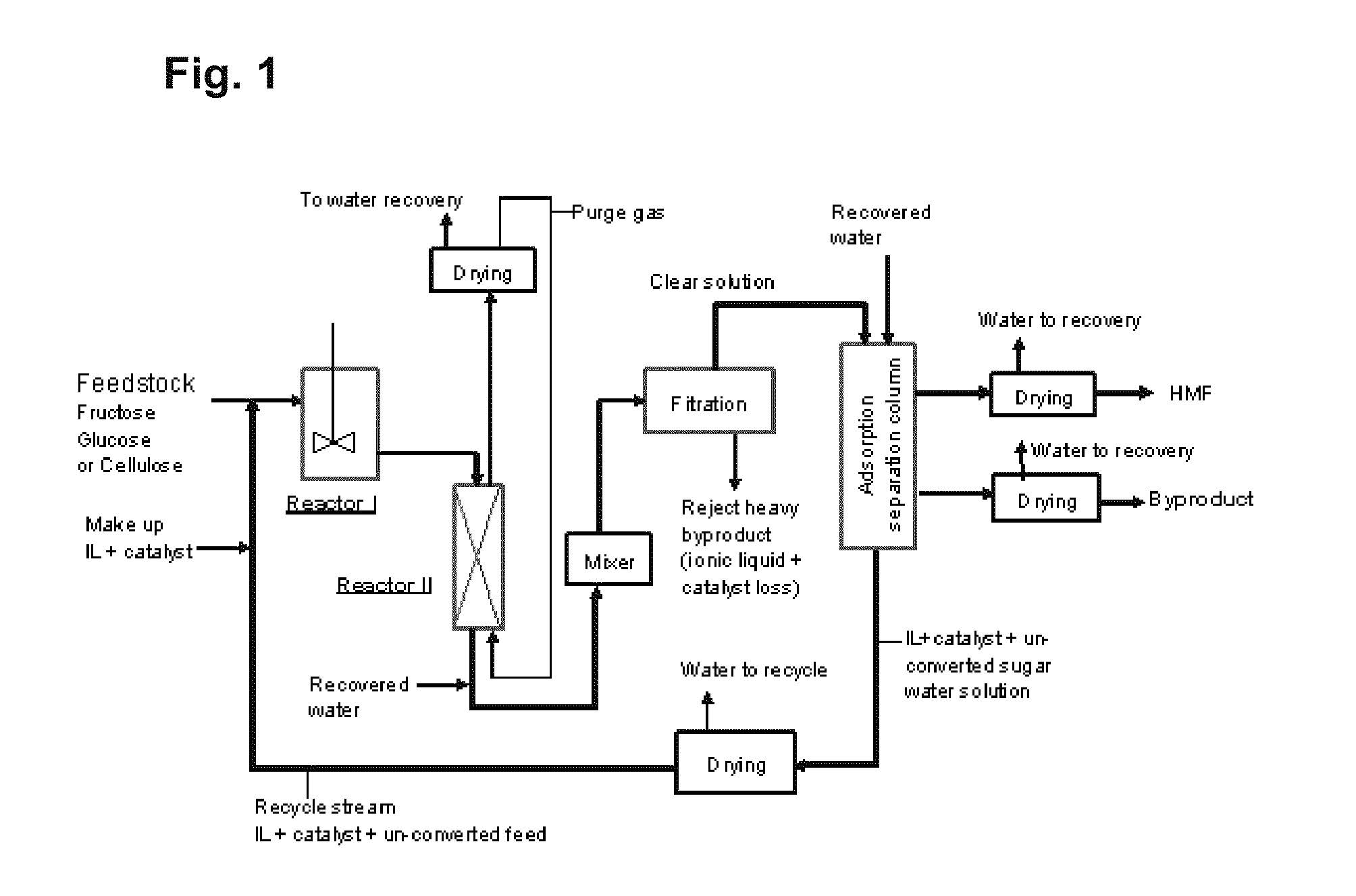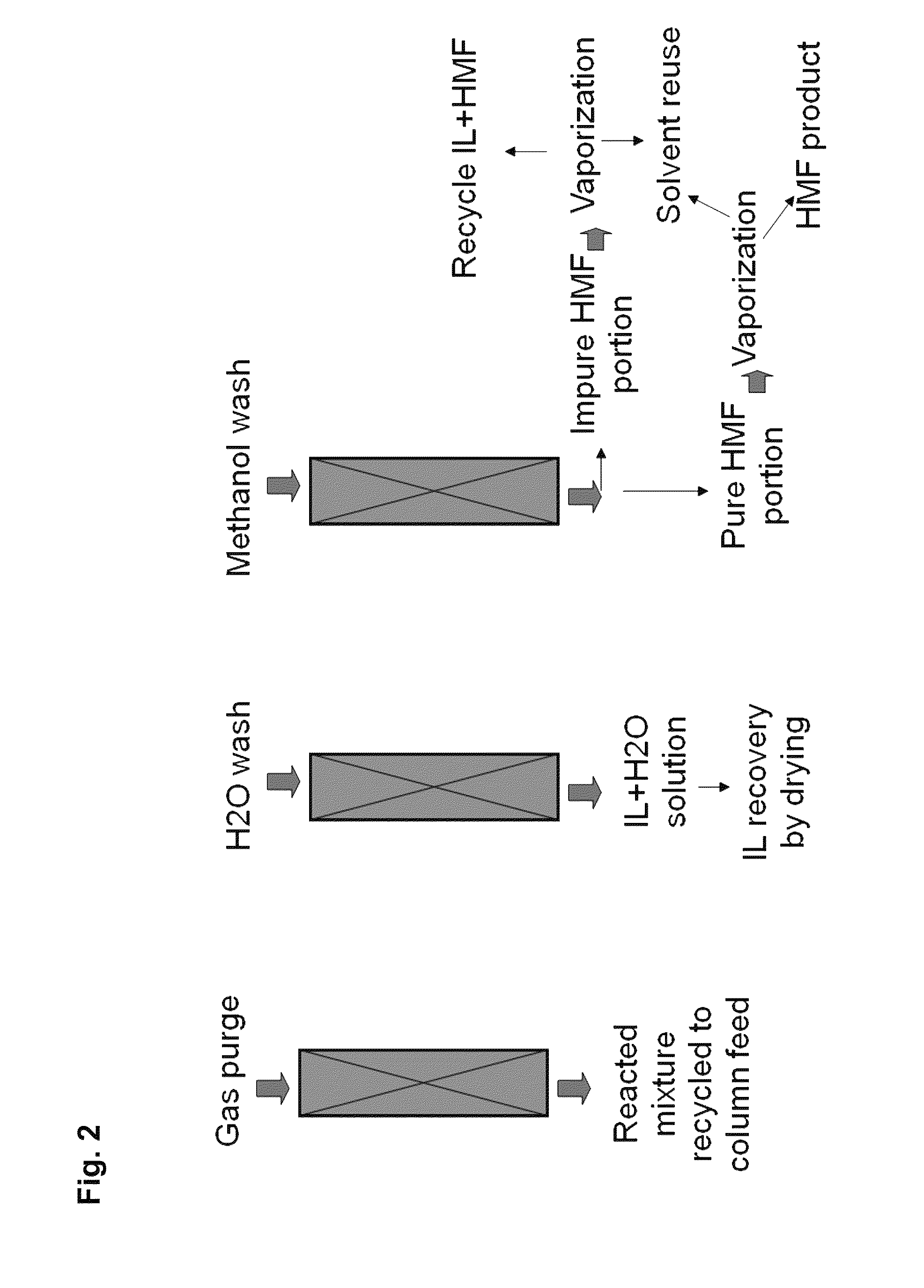Adsorption separation processes for ionic liquid catalytic processes
- Summary
- Abstract
- Description
- Claims
- Application Information
AI Technical Summary
Benefits of technology
Problems solved by technology
Method used
Image
Examples
example 1
Adsorption Separation of HMF and Imidazolium Ionic Liquid
[0089]Embodiments of adsorbent materials' selectivity for selectively adsorbing HMF over monosaccharides such as glucose in an imidazolium based ionic liquid. Samples of solid adsorbent materials were contacted with a liquid mixture containing the imidazolium ionic liquid [EMIM]Cl (1-ethyl-3-methyl imidazolium chloride), HMF, a monosaccharide (fructose or glucose), and levulinic acid (LA) in the presence or absence of water at 80° C. under air seal at atmospheric pressure. The sample was shaken at 700 rpm for 1 hour to enhance mixing of the powder with the liquid. Each adsorbent material was tested under the same conditions with three feed liquid mixtures. Feed liquid mixture A had a nominal composition of 1% glucose, 0.5% levulinic acid, 3.5% HMF, and 95% [EMIR / ]Cl by mass. Feed liquid mixture B had a nominal composition of 1% fructose, 0.5% levulinic acid, 3.5% HMF, and 95% [EMIM]Cl by mass. Feed liquid mixture C had a nomin...
example 2
Adsorption Separation of HMF and Imidazolium Ionic Liquid
[0094]In other embodiments adsorbent materials' selectivity for adsorbing HMF over monosaccharides such as glucose in an imidazolium based ionic liquid, are illustrated. Samples of solid adsorbent materials were contacted with a liquid mixture containing the ionic liquid [EMIM]Cl, water, and either HMF or glucose, at 60° C. under sealed air at atmospheric pressure and with constant stirring at 700 rpm for 1 hour. Each adsorbent material was tested under the same conditions with two feed liquid mixtures. Feed liquid mixture A had a nominal composition of 8.2% HMF, 13.5% water, and 78.4% [EMIM]Cl by mass. Feed liquid mixture B had a nominal composition of 0.5% glucose, 78.9% water, 20.5% [EMIM]Cl by mass. The liquid to solid mass ratio generally varied from 2 to 21 depending on the density of the adsorbent tested but the solid loose packing volume to liquid volume ratio was approximately 1.
[0095]The amount of liquid added to the...
example 3
Adsorption Separation of HMF and Phosphonium Ionic Liquid
[0100]Other embodiment adsorbent materials' selectivity for adsorbing HMF over monosaccharides such as glucose in a phosphonium based ionic liquid are tested. Samples of solid adsorbent materials were contacted with a liquid mixture containing the ionic liquid Cyphos 106 (triisobutyl(methyl)phosphonium tosylate), water, and either HMF or glucose, at 60° C. under sealed air at atmospheric pressure and with constant stirring at 700 rpm for 1 hour. Each adsorbent material was tested under the same conditions with two feed liquid mixtures. Feed liquid mixture A had a nominal composition of 7.3% HMF, 12.7% water, and 80% Cyphos 106 by mass. Feed liquid mixture B had a nominal composition of 0.5% glucose, 19.4% water, and 80% Cyphos 106 by mass. The solid to liquid mass ratio generally varied from 2 to 21 depending on the density of the adsorbent tested but the solid to liquid volume ratio was approximately 1. When adsorption was co...
PUM
 Login to View More
Login to View More Abstract
Description
Claims
Application Information
 Login to View More
Login to View More - R&D
- Intellectual Property
- Life Sciences
- Materials
- Tech Scout
- Unparalleled Data Quality
- Higher Quality Content
- 60% Fewer Hallucinations
Browse by: Latest US Patents, China's latest patents, Technical Efficacy Thesaurus, Application Domain, Technology Topic, Popular Technical Reports.
© 2025 PatSnap. All rights reserved.Legal|Privacy policy|Modern Slavery Act Transparency Statement|Sitemap|About US| Contact US: help@patsnap.com



